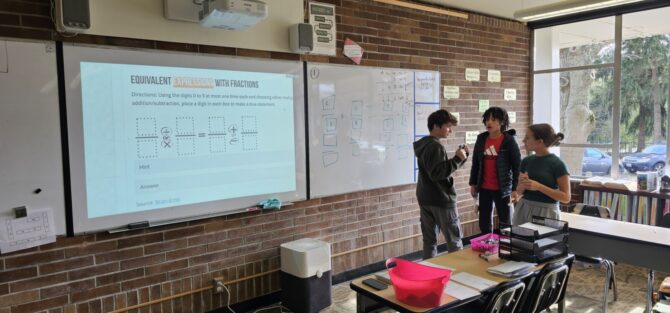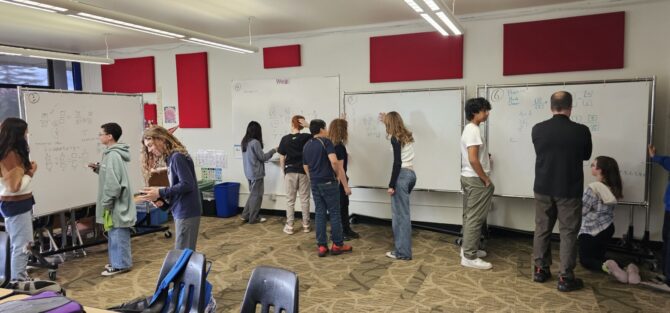Program Updates – Math & Science – November 2024
Math:
6th grade: We have just completed our second “unit” in Math so students have been really immersed in areas and surface areas of all sorts of typical and atypical 2-D and 3-D shapes. A test will be coming home this week so that you can see the end result of the unit. Students will need to collect your signature, and review and repair their work on the test. They will have a sheet of explanations available to explain their new, more accurate or more complete answers and they should give you plenty of time to look over their work on the test.
We have also started a mini-unit on factors that will have us finding all factors of given numbers, using factor trees and prime pools. (Please ask them to explain to you what those are…) As long as we are really focused and covering important ground in class, there will not be math homework assigned between now and Thanksgiving Week, so feel free to reinforce the importance of full classroom engagement (a vital habit for students to establish and bring to class all year.) This unit is not in their online text specifically, so you will need to view their notes or class agendas on Google Classroom, if you want to review or practice at home with your favorite mathematicians.

7th grade: The 7th graders are in their second unit of geometry. Students are refining their thinking about scaled copies as they learn to understand and use the term “dilation” and to recognize that a dilation is determined by a point called the “center” and a number called the “scale factor.” During the rest of the unit, students will be drawing images of figures under dilations on and off square grids and the coordinate plane. In describing correspondences between a figure and its dilation, they will be using the terms “corresponding points,” “corresponding sides,” and “image.” Students will learn that angle measures are preserved under a dilation, but lengths in the image are multiplied by the scale factor.

8th grade: Algebra 1 – We are taking a test this week that will include generating, graphing, and recognizing important elements (slope, intercepts, etc.) of linear equations, and then solving for two variables at once in a two-equation “system”, representing constraints of a situation. They have studied, explored, and practiced graphing, substituting, and eliminating-a-variable to represent and solve systems. Please review the test with them when it comes home later in the week for signatures and corrections.
Science:
6th grade: Learning about the movement of atoms and molecules can be tricky when we can’t actually see them individually. That means we have to look for evidence of their behavior in other places. One way students have done this is by using this simulator where they can manipulate both thermal energy and the pressure. We’ll also get to see sublimation (when a molecule goes directly from a solid to a gas without becoming a liquid first) in action tomorrow when we experiment with dry ice.

7th grade: Students have been investigating what happens when cells make more cells, what cells need to make more cells, and how cells get what they need to make more cells. We will be returning to the healing timeline they made at the start of the unit and applying what they have figured out about the interactions between the different systems in the body to explain the various events of healing that took place for the injury at the start of the unit. Finally, the students will apply their model for healing to explain growth at growth plates in children’s bodies as they become adults.
8th grade: We’re coming to the end of our study of plate tectonics: the features we see at plate boundaries and how the Earth’s surface has changed over hundreds of millions of years. Using this understanding and this simulator, the final assessment asks students to predict what a location on Earth might look like in the future. They will also continue making a claim and backing up that claim with scientific evidence and analysis.
